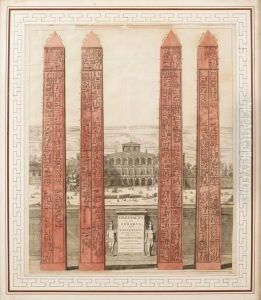Iannis Blaeu Paintings
Iannis Blaeu, also known as Johannes Blaeu or Joan Blaeu, was a Dutch cartographer, atlas maker, and publisher who played a significant role in the development of cartography during the Golden Age of Dutch mapmaking. He was born in Alkmaar, Netherlands, in 1596, into a family deeply rooted in the production and dissemination of maps and atlases. His father, Willem Blaeu, was also a renowned cartographer and instrument maker who had been a student of the famous astronomer Tycho Brahe. Iannis Blaeu was well-educated, studying at the universities in Leiden and Amsterdam.
Blaeu took over his father's business in 1638 and expanded it to become one of the largest and most prestigious publishing houses in Europe at the time. He is best known for his grand atlas, 'Atlas Maior', which was first published in 1662 and remained the definitive world atlas for over a century. It was an extensive work that included detailed maps of all parts of the world known to Europeans in the 17th century, with texts in Latin, Dutch, French, German, Spanish, and other languages, reflecting its international readership.
Under Iannis's leadership, the Blaeu publishing house produced not only maps and atlases but also globes, nautical charts, and scientific instruments. His works were notable for their accuracy, detail, and artistic embellishment, making them as much works of art as scientific documents. Sadly, much of Blaeu's legacy was destroyed in the disastrous fire that engulfed his Amsterdam workshop in 1672.
Iannis Blaeu died in Amsterdam in 1673, just a year after the fire that devastated his printing works. Despite this tragedy, his contributions to cartography endured, and his atlases continue to be celebrated for their historical value and beauty. Today, original copies of Blaeu's maps and atlases are highly prized by collectors and museums around the world.
